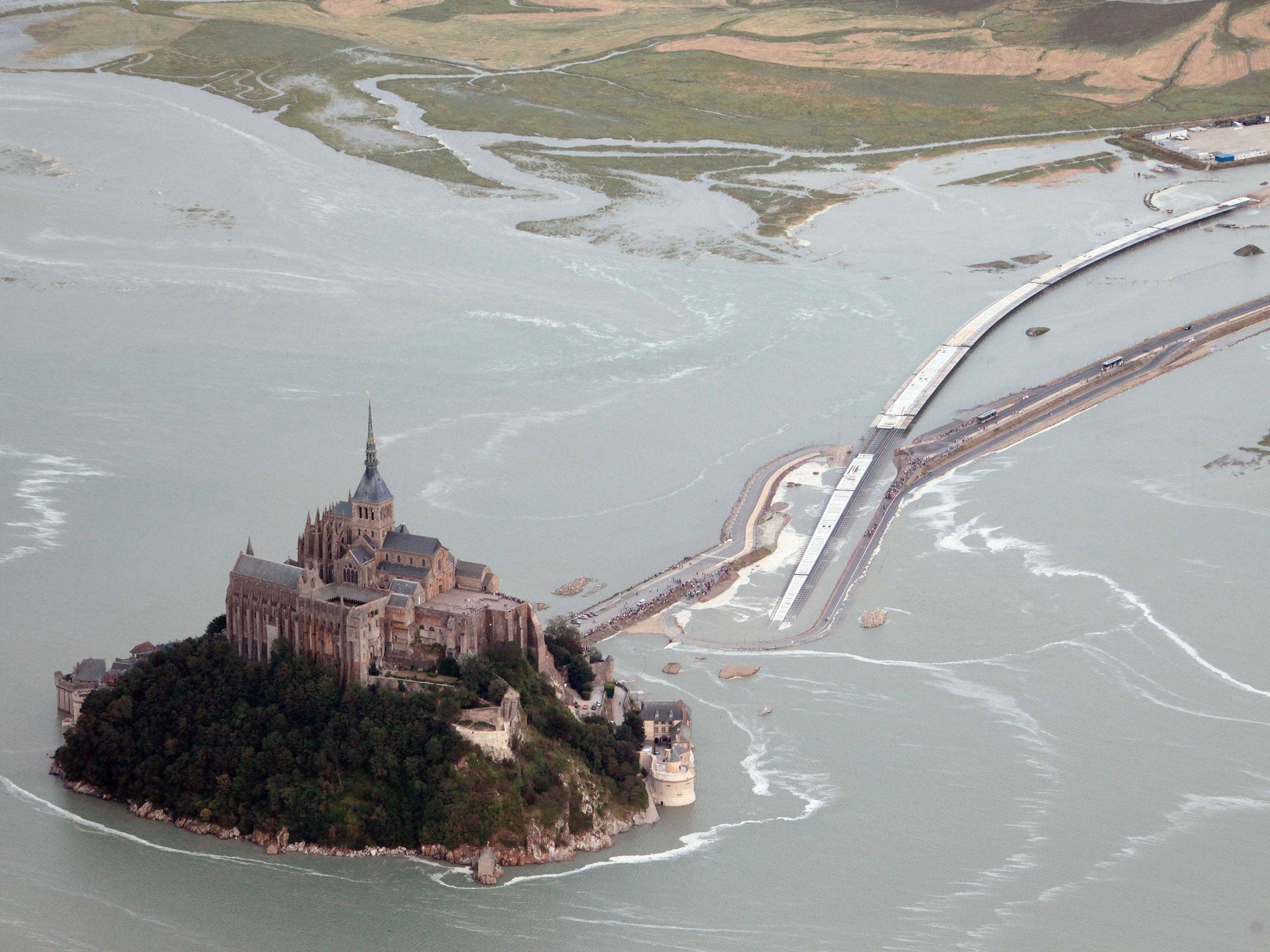Normandy 'island' Mont Saint-Michel cut off by extreme high tide
The last time the iconic landmark was totally surrounded by seawater was 134 years ago

Your support helps us to tell the story
From reproductive rights to climate change to Big Tech, The Independent is on the ground when the story is developing. Whether it's investigating the financials of Elon Musk's pro-Trump PAC or producing our latest documentary, 'The A Word', which shines a light on the American women fighting for reproductive rights, we know how important it is to parse out the facts from the messaging.
At such a critical moment in US history, we need reporters on the ground. Your donation allows us to keep sending journalists to speak to both sides of the story.
The Independent is trusted by Americans across the entire political spectrum. And unlike many other quality news outlets, we choose not to lock Americans out of our reporting and analysis with paywalls. We believe quality journalism should be available to everyone, paid for by those who can afford it.
Your support makes all the difference.One of the most celebrated small islands in the world became a true island this week for the first time since 1879.
The Mont Saint-Michel, an 8th century abbey-island just off the Norman coast, was cut off by an exceptionally high tide for 20 minutes on Wednesday night. The last time that the island was surrounded by sea water was just before the building of a one mile-long road causeway from “le continent” 134 years ago.
The ring of waves, though brief, was a vindication, ahead of schedule, of a €200m project to restore the “maritime character” and spiritual dignity of the Mont by banishing the salt-flats and car parks which once besieged its medieval walls.
For the last two years, the project has brought only bad news – political battles, court cases, strikes by the abbey staff and threats by the UN cultural organisation, Unesco, to suspend the Mont’s world heritage status. The arrival of the encircling high tide just after sunset on Wednesday night was the most dramatic success so far for an innovative project to harness river and tide to flush away three million cubic metres of silt and sand.
“This is a special moment but only a small beginning,” said Laurent Beauvais, president of Lower Normandy and head of the committee which runs the project.
Over the last two years – and especially in the last 12 months – the high ecological and spiritual aims of the plan have been buried by a landslide of local complaints and quarrels. Cars and coaches were banned last summer from driving over the 19th century causeway to park on the mud-flats beside the Mont. Tourists and some shop and hotel owners complained that they had to walk half a mile from the new carparks in-land to board shuttle buses to travel less than a mile. The mayor of the island, Eric Vannier, was convicted earlier this year of illegally influencing the decision to start the shuttle buses from a spot close to hotels and restaurants that he owned.
Unesco protested about plans to disfigure the island with a tunnel and helicopter landing pad. For more than a month this summer, staff at the abbey and in the village shops went on strike to complain that they had to queue with the tourists to board the shuttle buses. Most of these disputes have been resolved, either fully or partially.
The main project, the sweeping away of the salt flats which threatened to swallow the Mont permanently, has been a success from the beginning.
A new dam was built seven years ago near the mouth of the river Couesnon, close to the Mont. The dam captures river and tide and expels the water in a series of great flushing actions which have freed the isle from the silt and mud. Within 10 years, it is anticipated the Mont will be encircled by the high tide up to 90 times a year.
Join our commenting forum
Join thought-provoking conversations, follow other Independent readers and see their replies
Comments